Plastic curbs for paving slabs
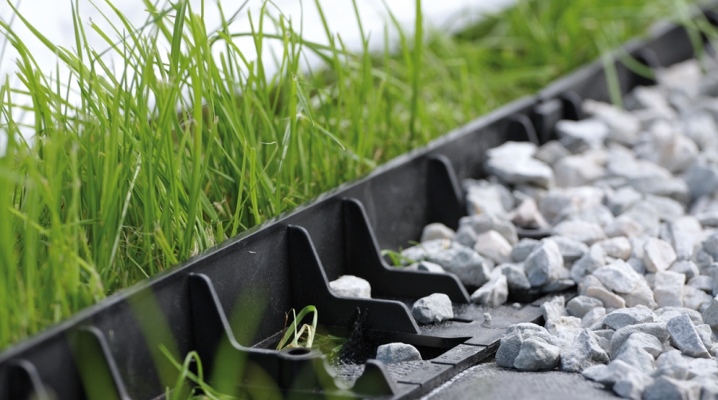
Plastic curbs for paving slabs make it easy and quick to give a paved area a neat, attractive look. The plastic curb is practical, resistant to moisture and has an attractive appearance. It is worth learning a little more about what it is, how it differs from the concrete analogue, how the curbs for the paths are installed.
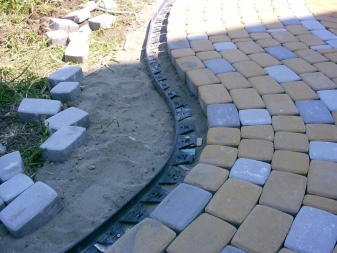
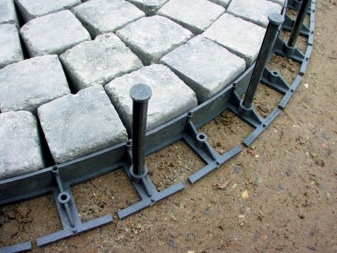
Advantages and disadvantages
Plastic curbs for paving slabs are an excellent choice for decorating a summer cottage or personal plot. They completely transform the appearance of a paved area, suitable for paths and more complex laying options, including for creating rounded, curly areas.
Such curbs well protect the tiles from contact with dirt, debris, greatly facilitate the planning of the landscape, give it a neater look.
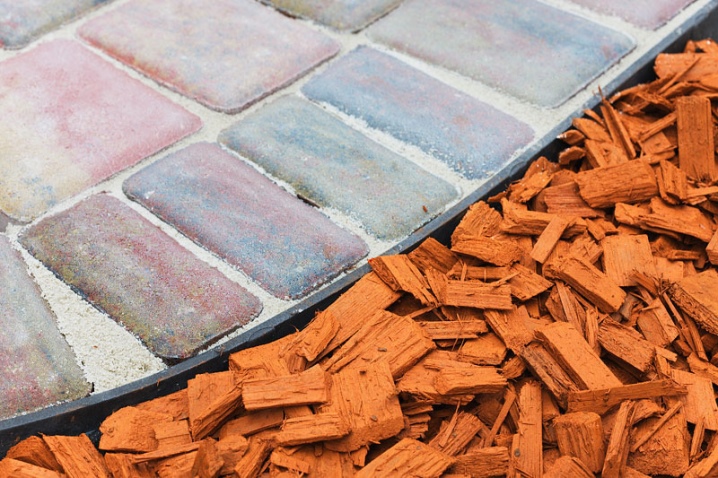
There are a number of obvious advantages of polymer curbs.
- Aesthetics. Ready-made elements are produced both smooth and with a decorative coating, relief, imitation of stucco molding. They look attractive all year round, and the variety of species allows you to choose the right option for any landscape design.
- Resistance to external influences. Heavy rain, snow, frost, bright rays of the sun do not have a significant destructive effect on the surface of the polymer material. For the production of borders, manufacturers use plastic with increased resistance to UV rays, preventing it from fading over time. Under mechanical action, chips and cracks will not appear on the surface.
- Undemanding care. Such a border does not need to be updated, like wooden or metal counterparts. It is enough to periodically wash off the dust with water from a hose. When moving a walkway or paved area, the railing can be reused.
- Injury safety. Polymer curbs are devoid of the drawbacks of their concrete counterparts and wood counterparts. Splinters, broken knees will not be a problem, even if there are children or very playful pets in the house.
- Versatility. The plastic curb does not turn the site into a semblance of an official residence - it is appropriate wherever it is needed. You can neatly demarcate the parking for guests or surround them with their favorite flower bed by the path, arrange the area by the pond or separate the lawn from the entrance to the garage.
- Affordable cost. A plastic curb is much cheaper than any other fencing option for paving stones or tiled surfaces.
- Eco-safety. For the production of curbs, chemically resistant polymers are used that cannot harm the soil. Even when heated, they do not emit hazardous substances.
- Durability. The service life of quality products is calculated for decades.
- Ease of installation. The curb along the walkway, around the patio or pool is easy to install yourself with only the necessary set of tools.
- Minimum weight. Even very loose soil will not buckle under the weight of the curb. It also makes storage and portability much easier.
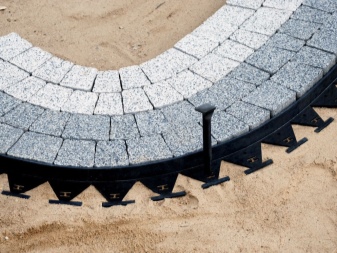
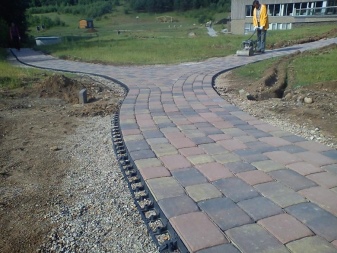
Despite the obvious advantages, this type of borders also has disadvantages. The first one is a large number of low-quality products on the market. In addition, not everyone likes landscape design using plastic, some options look frankly cheap and primitive.
Under significant mechanical loads, polymer structures can simply crack - concrete has a higher bearing capacity.


What are they?
The plastic curb can be classified according to its function or appearance. There are functional options - almost invisible, produced in the form of a tape mounted along the edge of a tiled path or platform. Decorative modules are prefabricated and sectional, can imitate other materials, have a textured finish.
Among the most popular varieties, there are several interesting options.
"Country"
The border is of a tape type with a narrow base and a thickened rounded border at the top. Well suited for decorating the courtyard with small mosaic tiles.
Looks neat but not overly decorative.
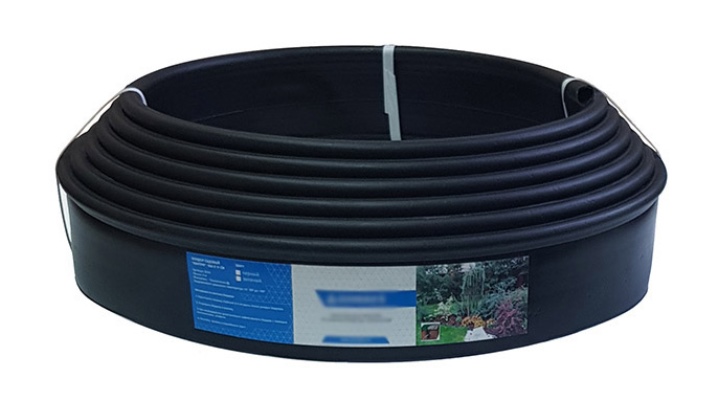
"GeoPlastBord"
Sectional curb attached to the ground surface with special stakes. It is flexible, easily takes complex outlines, convenient for laying out curly paths and platforms.
The material is polypropylene.
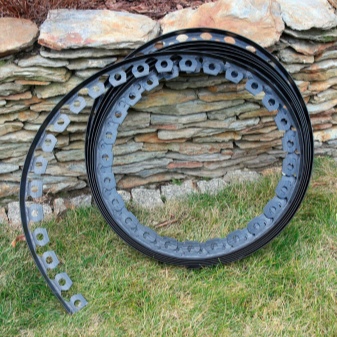
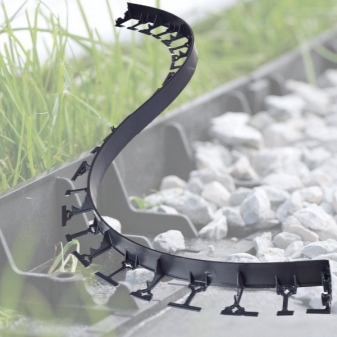
"Labyrinth"
Its blocks are immediately produced with decor in the form of imitation of natural stone, brickwork. They are easily mounted in a single line, have a voluminous structure, are securely fixed with anchors, and have sufficient height to ensure the delimitation of the territory.
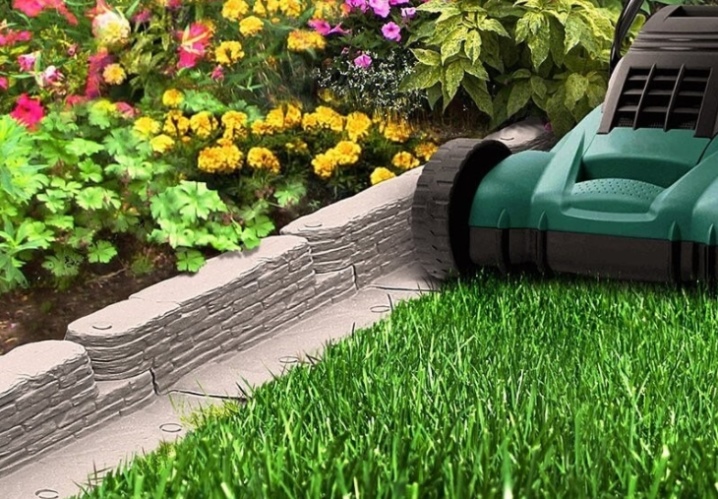
"Ribbon"
A classic flexible curb of small thickness, which is better to dismantle for the winter. It is suitable for framing flower beds, lampposts, located in the middle of tiled areas.
The tape easily takes a curved shape, it can have a smooth or corrugated surface.
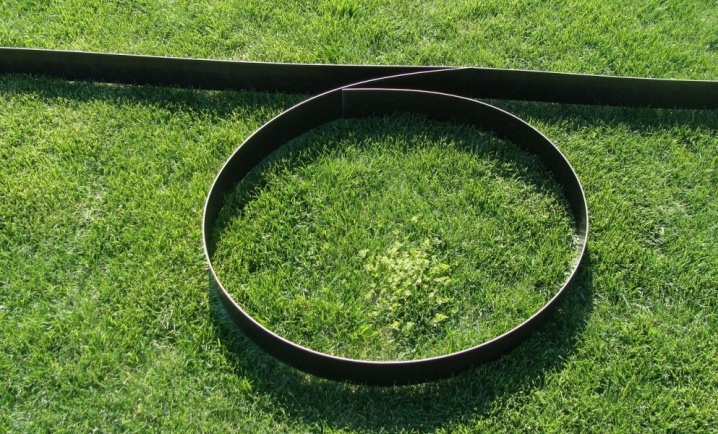
"Old stone"
Such curbs have a textured surface that imitates roughly processed limestone. They go well with natural stone paving stones or tiles in a retro style, in harmony with alpine slides and other types of landscape compositions using minerals.
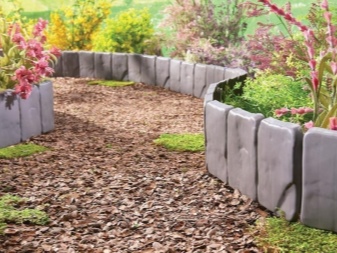

"Garden board"
Volumetric curbs imitating the texture of a terrace covering. They go well with paths in the garden, they are suitable for delimiting the blind area near the house.
They are usually produced in the form of boards measuring 150 × 3000 mm.
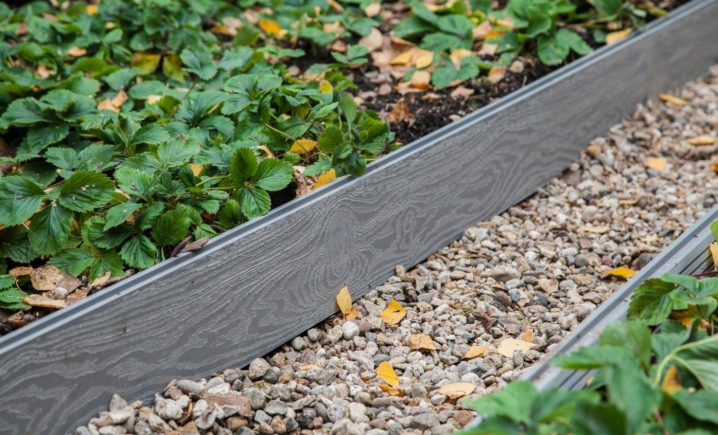
"Brick"
This type of plastic prefabricated fence is made in the form of sections imitating bricks located at an angle, in the form of teeth. The curb is easy to install, but not designed for significant loads.
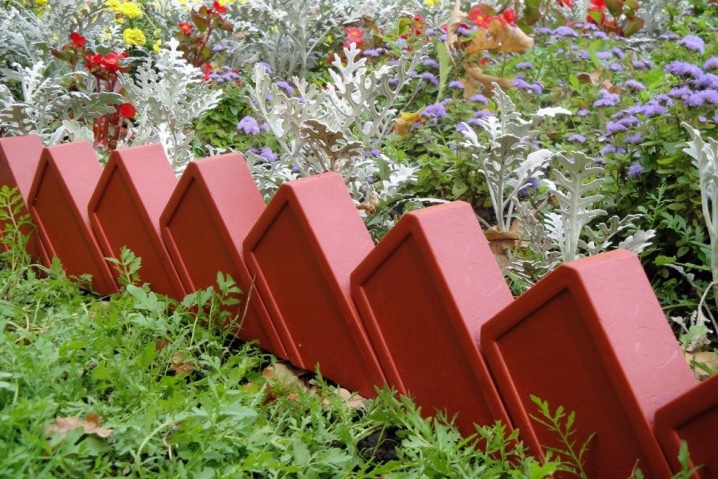
This is not the only fantasy of manufacturers. On sale you can find modules with imitation of decor in the style of Roman columns or other architectural elements, with medallions, rosettes and floral ornaments.
Installation rules
Installation of a plastic border is not too difficult, it takes a minimum of time. No prior preparation of the trench is required to install the fence.
Most options are easily anchored in the ground using special pegs or anchors.
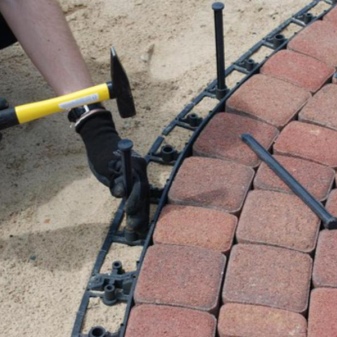
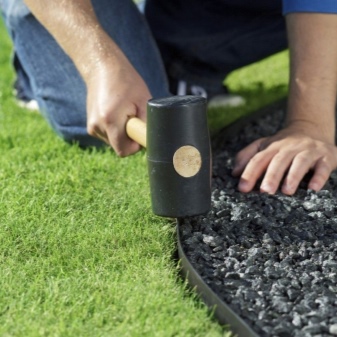
The groove depth for tape elements is no more than 8 cm, the width depends on the parameters of a particular product. The base is placed in the prepared pit, then it can be sprinkled with soil. The prefabricated border is formed section by section, for it it is enough to leave 2-3 cm at the edges of the tile covering, along the entire perimeter when preparing the site.
When choosing, it is worth giving preference to options with an anchor connection - they have additional stiffeners. It is possible to fill the curb at ground level with sand or its mixture with rubble.
On rocky ground, it is better to replace standard anchors with metal reinforcing bars. On too soft and loose ground, it is recommended to increase the number of fixation points. In this case, the anchors are stuck in at an angle so that their end goes under the tile layer. This will strengthen the structure.




































































The comment was sent successfully.